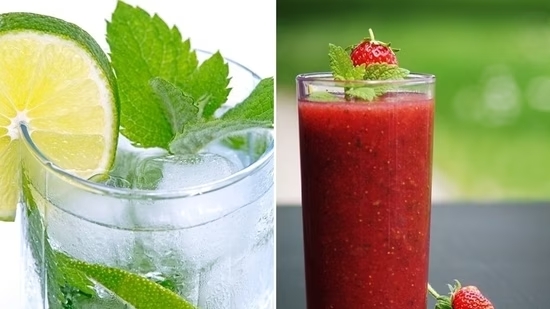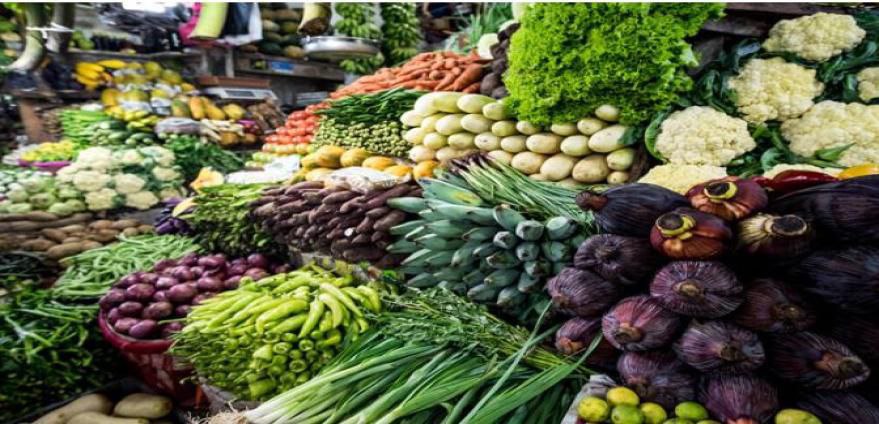By Yin Nwe Ko
Water is like the fuel that keeps our bodies running smoothly. It helps us with essential functions like keeping our blood flowing, regulating our body temperature, and aiding in digestion. Did you know that about 60 per cent of our bodies are made up of water? That’s a lot! But if we don’t drink enough water, we can become dehydrated, which means our bodies lose too much water. Even losing just a little bit of water — like one to two per cent of our body weight — can cause problems like feeling dizzy, tired, and having headaches.
As we get older, it becomes even more important to stay hydrated because our bodies don’t hold onto water as well and we might not feel as thirsty. But don’t worry, there are easy ways to know if you’re drinking enough water. You can check the colour of your pee. And guess what? It’s not just water that can help us stay hydrated! Let’s explore some other drinks that can keep us feeling great.
In fact, water keeps our most basic functions running — from blood circulation to temperature regulation through sweating to digestion and more.
As mentioned earlier, our bodies are about 60 per cent water and if we don’t get enough to drink, dehydration — defined as a body-water loss of at least one to two per cent of your weight—can cause dizziness, fatigue, and headaches. Both our body-water content and our thirst perception diminish as we age, putting seniors at greater risk of dehydration.
An easy way to gauge your hydration levels is by the colour of your urine and how often you pee (ideally more than four times per day). “It doesn’t need to be clear all the time, but it should be light like lemonade, not dark like apple juice,” says Isabel Maples, a registered dietitian based in Washington, DC, and a spokesperson for the Academy of Nutrition and Dietetics. “Keep in mind that some medications and supplements can also affect urine colour.”
So how much water do we need to drink? You may have heard of the decades-old eight-glasses-a-day guideline, but experts say that’s not supported by current research. “In reality, fluid needs vary from day to day and from person to person,” says Maples.
The average adult male requires about three litres of fluids a day, while the average female should consume just over two litres. Other factors, such as temperature, altitude, intense exercise, and certain medications, can increase those needs.
Of course, water isn’t the only option. An estimated 20 per cent of our fluid intake comes from foods, and the rest can be a combination of water and other hydrating beverages. Here are several:
COFFEE: Go ahead and order a large coffee. Caffeinated drinks do have mild diuretic properties, but there’s no evidence that they lead to dehydration. “Coffee and tea may increase urination in the short term, but the fluid intake offsets that loss,” says Toronto-based registered dietitian Drew Hemler.
A 2014 UK study published in the journal PLOS One measured the body water of subjects in two groups: one that drank 800 millilitres of coffee a day and the other an equal amount of water. After controlling for food intake and exercise, researchers found no significant difference in hydration levels.
“There is no reason why caffeinated beverages can’t count toward your daily fluid totals, as long as you’re used to the caffeine,” says Maples. Five or more 250-millilitre cups of coffee a day is excessive, she says, but three to four cups is within healthy limits.
TEA: Both black and green tea have about the same hydration benefits as coffee, with the added boost of heart-protecting antioxidants. Soothing brews like chamomile or mint are caffeine and calorie-free, and their taste may encourage you to drink more. “Hibiscus tea, in particular, is packed with antioxidants and flavonoids,” says Hemler, due to the anti-inflammatory pigment molecules that give hibiscus its bright red colour.
MILK: In a 2015 study published in the American Journal of Clinical Nutrition, British researchers found that cow’s milk, both full-fat and skim, is more hydrating than plain water. That’s because it takes longer to digest than water, allowing the body to absorb more fluids. In the study, subjects who drank milk produced less urine over four hours than those who drank an equal amount of other fluids and showed higher hydration levels in their blood. Milk also supplies three nutrients that most of us need more of: potassium, vitamin D, and calcium.
PLANT MILK: The nutritional profiles of non-dairy milk options (soy, almond, oat, and coconut are top sellers) vary. But most are low-calorie, low-cholesterol, and more environmentally sustainable alternatives to dairy. “Some plant milks are fortified with calcium and vitamins A, D, and B 12, as well as other nutrients commonly added to cow’s milk,” says Hemler. “However, they fall short on protein.” Only soy milk comes close, at six grams per cup, compared to eight grams for cow’s milk.
Plant milk is higher in water compared with dairy — almond milk is 97 per cent water, and cow’s milk is 87 to 90 per cent — but because they lack dairy’s protein and carbohydrates, they pass through the digestive system faster, putting them roughly on par with water for hydration.
SPORT DRINKS: Available in a range of colours and fruity flavours, sports drinks are advertised as being more hydrating than water. But that’s only accurate because people tend to drink more of something that tastes good, says Hemler. “If you’re trying to lose weight, be aware that these drinks can also increase your total carbohydrates and calories,” he says.
A 600-millilitre bottle contains up to 35 grams, or eight teaspoons, of sugar, but there are low- or no-sugar options.
Sports drinks do supply electrolytes — minerals that support hydration and muscle function—and can be helpful in recovery from intense exercise lasting more than an hour. An electrolyte-enriched drink can also help rehydrate you after an episode of severe diarrhoea or vomiting.
JUICE: Fruit and vegetable juices with no added sugar are excellent sources of vitamins, minerals, and antioxidants, which can reduce inflammation and help prevent age-related diseases. Natural sugars, like fructose and lactose, are digested more slowly than processed sugar, helping stabilize your metabolism. Orange juice has slightly better hydration than water, according to a 2015 British study that measured subjects’ urine output after consuming different drinks.
COCONUT SAP: Technically a fruit juice, this clear, slightly sweet liquid contains hydration-aiding electrolytes, namely sodium, magnesium, and potassium. In fact, 250 millilitres contain more potassium than a banana. It’s marketed as a natural exercise-recovery drink, but a 2012 study published in the Journal of the International Society of Sports Nutrition found no significant hydration difference between coconut sap, sports drinks, and water. If you like something sweeter than water but are watching your calories and carbs, coconut sap is a healthier option than some sports drinks, at 45 to 60 calories and six grams of sugar per 250 millilitres.
ALOE VERA: The gel of the aloe plant is well known as a skin salve for its moisturizing and burn-soothing properties, but it can also be mixed with water to make a refreshing, hydrating drink. Aloe is rich in polyphenols, a type of antioxidant, and research from a 2016 study published in the journal Nutrients suggests it may even help control blood sugar.
You could make your own, but it’s best to buy bottled aloe juice; the sticky latex inside the aloe leaf can cause stomach upset if not carefully removed.
BONE BROTH: Made by simmering chicken or beef bones and cartilage with vegetables for a minimum of 12 hours, bone broth has become trendy as a comforting drink with anti-inflammatory properties, thanks to the amino acids derived from collagen.
With its added salt, it can also replenish electrolytes; sodium helps the body retain fluids. Too much sodium, however, can put extra pressure on your blood vessels, making your heart work harder.
“Your recommended limit for sodium intake is 2,300 milligrams a day, and 500 millilitres of bone broth can contain a quarter of that,” says Hemler. If you buy bone broth, low-sodium versions are best, or you can make your own and reduce or skip the salt.
In sum, our bodies rely on water to carry out many essential functions, from keeping our blood flowing to helping us digest food. Dehydration, which occurs when we don’t have enough water, can lead to problems like dizziness and fatigue. As we age, it becomes even more important to stay hydrated. You can easily check your hydration by looking at the colour of your pee, as I said earlier. Remember, it should be light like lemonade, not dark like apple juice. While water is crucial, there are other options to keep us hydrated. Drinks like coffee, tea, milk, and even fruit juices can contribute to our fluid intake. Each has its benefits, from antioxidants to essential nutrients. Just remember, staying hydrated is a key to keeping our bodies working at their best!”
Reference: Reader’s Digest June 2023















